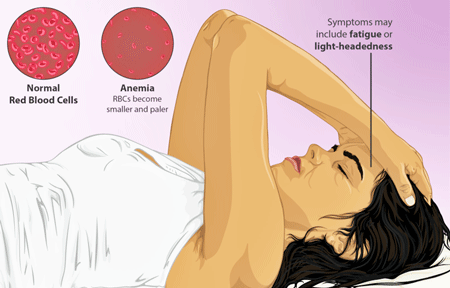

Infection Fells Teenager
In August 2014, a formerly very healthy and active Jack Schlanger entered the realm of the chronically ill. The thirteen-year-old’s story began with three days of high fever followed by eight days of lower-grade fever and extreme fatigue/malaise. About two weeks later he began experiencing nausea and loss of appetite and had a massively swollen lymph gland. His skin began peeling off his hands and feet.
A myriad of blood tests followed almost all of which were normal, except for some mild abnormalities in his red blood cells, hemoglobin and hematocrit tests, and high platelet, monocyte, and high eosinophil counts.
A virus felled this formerly healthy young man.
An infectious disease specialist believed Jack was suffering from a coxsackie or similar virus, and he was treated with the antiviral medication Zovirax for a week, followed by a 10-day course of Amoxicillin.
During September Jack experienced illness flares which left him pale, lethargic, without an appetite, and with stomach pain at roughly 3-5 day intervals.
ENT and infectious disease specialists ordered ultrasounds which revealed two large lymph nodes the size of golf balls. More blood work was done, all of which came back normal except for the puzzling low hemoglobin and hematocrit levels, and a few immune tests.
By now Jack has been tested seven times for mononucleosis, twice for Lyme disease, and several times for herpes and other viruses. Plus he’s had his lymph nodes biopsied for lymphoma & other lymph node diseases. All the tests have come back normal.
Jack improved after one of his enlarged lymph nodes was removed, but then relapsed, and after missing too many classes was finally pulled from school. He was now being home tutored.
In Nov. Jack was referred to a specialist in adolescent medicine who diagnosed him with post-viral fatigue syndrome. (After Jack hit the six-month mark in February, he was diagnosed with chronic fatigue syndrome (ME/CFS)). Thankfully, he was not referred to psychiatric care, but his parents are informed that nothing further can be done. By now Jack is experiencing near-constant stomach pain.
Four Diagnoses
When more blood tests, trips to specialists and another biopsy didn’t pan out Jack’s parents were at a loss until a week at the Rochester Mayo Clinic in March left Jack with four diagnoses:
- POTS (Postural Orthostatic Tachycardia Syndrome) (53 beats per minute increase upon standing) – POTS occurs when one’s heart races during standing
- iron deficiency
- mild neutropenia
- gastric erosion.
Jack was put on metoprolol 25mg twice daily, iron supplements (vitron C – 1 tablet=65mg iron – once daily), & Prilosec (once daily) for his gut issues. He was told to take in as much salt as possible, drink 3-4 liters of liquid per day, start cognitive-behavioral therapy (once a week), slowly ramp up his exercise program (goal = 30 min of exercise plus 30 min other activity per day) and try to find a way to attend school. The head of his bed was raised 4-5 degrees to help him with sleep.
From March through May Jack very slowly improved. He gained a couple of pounds, his stomach pains – his worst complaint – are reduced a bit, and he’s sleeping a bit better. He’s able to attend two classes a day at school and is doing five minutes of exercise in the morning and 15-20 minutes of walking and jogging on the treadmill in the afternoon. He is still bothered by exercise-induced fatigue and other symptoms.
Despite being on iron supplements for nine weeks Jack’s blood ferritin levels (20 ng/ml) are, however, unchanged in May and his neutrophil and WBC levels remain low. When all Jack’s pediatrician can do is to recommend more iron tablets a day, the Schlanger’s are at a standstill.
Iron Man
In July 2015 Jack met with a hematologist who put him on prescription oral iron tablets and told him to take them with orange juice and in between meals that contain dairy products and eggs. His ferritin levels jumped up fifty percent to 30 ng/ml over the next four weeks and Jack improved.
In the fall he was able to attend four classes a day, but despite months of graduated exercise training (GET) he was still unable to participate in sports.
In September, in an attempt to increase his iron levels, Jack began Venofer iron sucrose infusions. His first infusion bounced his ferritin levels to 47, and his next one to 93. Jack could immediately tell the difference; he was not well but he was starting to play some hockey and he was not getting sick after exercise.
(The Schlanger’s considered Fereheme infusions, which they had heard had great results in some POTS patients but went with the Venofer infusions because of possible side effects.)
Supplements weren’t enough. Jack needed to be on Iron infusions to be able to exercise again.
Since Jack began the infusions (he’s had 7 in about 9 months) his serum ferritin levels averaged 66 ng/mL. Note that Jack’s iron levels are now far above what most doctors would consider that he needs.
Jack’s first big breakthrough came when he finally was able to get more iron into his system. His levels had gotten up to 30 ng/mL – well above the action point in medicine – but he needed more. The iron infusions alone got Jack to about 80%. He was able to make it through 75% of his normal school day and was regularly doing light exercise without feeling any post-exertional malaise.
Why might iron be so helpful for Jack? Iron is a critical factor in aerobic energy production – our main means of producing energy. Oxygen is carried to our tissues by hemoglobin which is dependent upon iron. Low iron levels, then, reduce the amount of oxygen that gets delivered to the mitochondria. It’s no wonder that anemia is often (but not always) associated with fatigue.
Achieving optimal iron levels has been shown in various studies to improve aerobic ability, endurance, muscle fatigability and restless leg syndrome, as well as cognition including memory, verbal learning and other facets of cognitive functioning.
What Are Your Ferritin Levels?
Jack’s iron issues were initially missed because his ferritin, hemoglobin, and hemocrit levels were never more than low “normal”. It wasn’t until he met with the POTS specialists at the Mayo Clinic that iron entered into his health equation.
That, of course, brings up the question – what is a healthy serum ferritin level? Jack’s experience suggests that normal iron levels in one person might be too low for another.
That actually makes some sense given the huge range of iron levels found in humans. Medicine.net defines normal blood ferritin levels for males (12-300 ng/ml) and females (12-150 ng/ml). WebMD’s normal ferritin levels are a bit higher (men 18-270 ng/ml, women 18-160 ng/ml), but they note that “a value that falls outside the normal values listed here may still be normal for you or your lab”.
Jack’s ferritin levels needed to be well above what’s considered normal for him to return to health.
The American Family Physician (AFP) website, on the other hand, states that “patients with a serum ferritin concentration less than 25 ng per mL (25 mcg per L) have a very high probability of being iron deficient”.
The situation is confused by the fact that inflammation or infection can elevate ferritin levels. If chronic inflammation is present, the AFP states that “iron deficiency anemia is likely when the ferritin level is less than 50 ng per mL”. In fact, if inflammation is present, the AFP believes that iron deficiency can only be excluded when ferritin levels are greater than or equal to 100 ng per mL (224.70 pmol per L).
Being female may add another layer to the issue. A study found that women seeing a doctor for fatigue who had seemingly normal ferritin and hemoglobin levels benefited greatly from iron supplementation. In a multi-center, parallel, randomized controlled, closed-label, observer-blinded trial they were given oral ferrous sulfate (80 mg of elemental iron daily; n = 102) or placebo (n = 96) for 12 weeks.
The women on the iron supplements decreased their fatigue by 50% – a statistically significant amount compared to placebo. The authors proposed that women experiencing unexplained prolonged fatigue may be iron deficient if their ferritin values are below 50 μg/L, even when their hemoglobin values are normal (above 12.0 g/dL.). They noted that even though ferritin and other measures were in the normal range, the iron supplements increased the women’s rate of red blood cell production.
We don’t know the ferritin inflection point for Jack – the level at which ferritin really made a difference for him – but note that 30 ng/ml was not enough. It wasn’t until sucrose iron infusions boosted his ferritin levels above 50 that he really noticed a difference.
Jack apparently needs considerably more ferritin than his sister (30 ug/mL) to stay healthy. His ferritin levels are now (50’s to 100 ug/mL) are similar to his mother’s (80 ug/mL).
Jack’s low white blood counts (WBC) (3.5 thous/mcl) and neutrophils (absolute -1092) had been an ongoing concern as well, but they rebounded after Jack began the iron infusions. They were normal for five months but then dropped several times into the low range during the last five months Jack has been near healthy suggesting that low WBCs and neutrophils were not the issue for Jack.
Questions
Unfortunately, nobody knows whether infections, growth spurts, or other factors are kicking off low iron stores – and POTS – in Jack and other adolescents, or if their low iron levels preceded the onset of their POTS.
Nor is it clear why Jack and some other POTS patients have difficulty absorbing oral iron tablets. Jack’s parents reported that a Dallas hematologist, Dr. Birenbaum, who uses Feraham iron infusions, claims that most of his POTS and cancer patients do not absorb oral iron well.
Low Normal Ferritin Levels?
What to do if you have ferritin levels below, say, 50 ng/mL and you are experiencing fatigue, stomach problems, and other issues? Perhaps do what Jack did. Try oral iron tablets and then get your blood ferritin levels checked again.
If they haven’t gone up perhaps consider trying sucrose or other iron infusions. The results in Jack’s case were obvious – he quickly felt better.
Taking Iron
Because the absorption of elemental iron is enhanced by an acidic gastric environment taking ascorbic acid (Vitamin C) with iron can help. Foods rich in tannates such as tea, or phytates such as bran and cereal, or pH-raising drugs such as antacids, histamine H2 blockers, and proton pump inhibitors should be avoided.
Jack’s doctor had him take iron with orange juice and avoid meals with eggs and dairy. Iron taken on an empty stomach is absorbed best but can cause gastrointestinal upset and constipation. For people who can’t break down the coating on iron tablets, liquid iron may be best.
Iron Deficiency, Autonomic Nervous System Issues, and POTS
Questions concerning the relationship between iron deficiency, orthostatic intolerance, and autonomic nervous system dysfunction are not new. Despite growing evidence that iron deficiency commonly occurs in POTS, iron supplementation is rarely mentioned as a possible treatment. Jane Brody’s excellent New York Times Piece on POTS, for instance, does not mention it. Outside of its use with erythropoietin, it’s not mentioned in DINET’s excellent POTS treatment page, in Dysautonomia International’s treatment overview.
Back in 1994 Biaggioni (who has done work on ME/CFS) found that anemia was common in people who had low blood pressure upon standing (orthostatic hypotension). A very small study the next year also found that autonomic failure was highly associated with anemia and orthostatic intolerance.
Jajour and Jajour found that 50% of adolescent POTS patients compared to 14% of adolescents in the population at large had low “iron storage” levels (SF < 25 ug/L). Twenty-five percent of adolescent girls were deemed to have iron deficiency (SF< 12ug/L) compared to 9% of the population at large. Almost half of the young males in the small study were deemed to have anemia. This same group found low iron storage in adolescents with neurally mediated syncope or fainting.
A larger Mayo Clinic study (n=188) examined adolescents with fatigue and/or orthostatic intolerance. The study participants, 75% of whom were female, commonly experienced dizziness upon standing (84%), fatigue (71%), headaches (63%), and nausea (54%). It defined iron deficiency as serum ferritin of 12 Kg/L and low iron storage as serum ferritin of 25 Kg/L. Hypovitaminosis D was defined as=25-hydroxyvitamin D levels of e 20 ng/mL.)
Almost 70% of the participants were found to have postural orthostatic tachycardia syndrome (POTS). Sixty-nine percent either had iron insufficiency or low iron stores. Increased heart rates were not associated with low iron but low vitamin D levels were.
People with iron-deficient anemia also tend to have reduced heart rate variability and increased sympathetic nervous system activity. (A similar kind of reduced HRV is also found in FM and chronic fatigue syndrome (ME/CFS).
A Mayo clinical trial examining the efficacy of iron sucrose infusions in POTS patients with non-anemic iron deficiency is slated to end in December of this year. It should, if successful, add iron to the list of generally accepted treatments for POTS. (Update – that study was never completed.)
Causes
Several hypotheses have been put forth to attempt to explain the correlation between lowered iron storage levels and orthostatic intolerance. They include altered blood viscosity, red blood cell deformation, and hypoxia-associated mitochondrial dysfunction (all of which have been suggested in ME/CFS).
Another possibility is the abnormal metabolism of the neurotransmitters (catecholamines) used in the autonomic nervous system. Some researchers believe POTS patients with greatly increased sympathetic nervous system activation (hyperadrenergic POTS) might have the biggest iron storage issues of all.
The Nitric Oxide Connection
Jajour and Jajour speculated that reduced iron stores could increase the levels of nitric oxide (NO) present. Because the endothelial cells lining the blood vessels release NO to open up or dilate the blood vessels, increased NO may be contributing to POTS. Increased NO levels, in fact, have been found in POTS.
Interestingly, iron deficiency anemia has been associated with increased NO metabolite levels as well. Hemoglobin, it turns out, is the main scavenger of nitric oxide, and is apparently why fainting is another possible consequence of anemia. Indeed, one research group has linked reduced ferritin levels with “neural mediated syncope” or fainting.
Interestingly, the salt craving common in ME/CFS and POTS could derive from salt’s ability to reduce endothelial NO levels.
The single largest reservoir of blood in our bodies is found in our abdomen. Julian Stewart, who has been studying POTS and ME/CFS for years, believes that either the presence of anemia or reduced iron stores cause increased nitric oxide production, blood vessel dilation, and blood pooling in the abdominal area first. Abdominal or “splanchnic” blood pooling has been found in POTS.
Conclusions

Most doctors would not diagnose Jack with iron-deficiency anemia but his Mayo doctors do – and probably saved his life by doing so. (Image by Mupchar from Wikimedia Commons).
Jack’s flu-like onset and his symptoms were typical pretty for a POTS patient. He was lucky to go to a center (Mayo Clinic) that correctly diagnosed his low normal iron levels as iron deficiency. When oral iron failed to bump up his iron levels sufficiently, Jack’s parents turned to iron sucrose infusions. Once Jack started those his energy increased dramatically, his stomach problems calmed down, and he was able to return to school and engage in light workouts without suffering from post-exertional malaise.
The kicker with Jack’s case is that Jack’s sister and mother, and his mother’s sister and nephew all test very much like Jack, but all are healthy. They all experience tachycardia upon standing, and they all have a poor venous return (their heart isn’t getting as much blood as normal). Jack’s sister plays three sports, though, and his mother is a Crossfit instructor.
The one difference found thus far is that their ferritin levels are higher than Jacks were. Unfortunately, we don’t know if Jack’s flu triggered a collapse of his ferritin levels or if they were low before. The significant number of people who would test positive for POTS on a tilt table test yet have no symptoms at all, however, suggests that an important factor is missing from a POTS diagnosis. Could low ferritin levels be that factor?
Jack is back to 80 or 85% functioning, but he’s not well yet; he’s not the athletic young man he was before he became ill, and he’s not engaging in competitive sports. We’ll see that Jack will regain his health, but he’ll have to use a controversial method to do it.
- Stay tuned for that in Iron Man Part II: A Young Man Recovers from POTS.
(Unfortunately, that blog has been lost. Jack regained the rest of his health at the MAYO POTS clinic, I believe it was, that encourages POTS patients to slowly increase their exercise levels.)
Update
Six years later, Jack reported that he remains in good, in fact, great health. (He’s an avid weightlifter.)He’s currently a 20-year-old college student studying at the University of Richmond in Virginia. He believes that the iron infusions saved his life and has given talks to teenagers with POTS.










i have been suffering with severe cfsme for the last 15 years. I have tried but to avail to enter a study. I have had two cancers due to my immune system being compromised with this disease. Can someone help to get into a study. Dr. Klimas has told me that my immune system and killers cells were going to cause another cancer which I would not survive from. please help me.
Why do you need a study? You need an immunologist or cancer follow up treatment.
This is not what it is labeled, a CFS recovery story.
This kid had iron deficiency problems – they fix that, he’s okay (or better, because he may still have the problem that caused the iron deficiency).
Listing it as a CFS recovery story is irritating (though a warning to CFS folk to check their iron levels, and consider low-normal levels a possible problem, which I will do, thanks).
But it is click and SEO bait – and highly misleading.
I disagree that it’s click bait. Jack met the criteria for ME/CFS and was diagnosed with it, and he had a classic ME/CFS onset. It was only later that he was diagnosed with POTS.
There are probably many many people who have been diagnosed with ME/CFS – just as Jack was – who’ve never seen a specialist who is aware of POTS – and able to diagnose it. Jack, after all, saw several specialists before he was able to get a diagnosis of POTS. If I had just titled this a POTS recovery story people with ME/CFS who have undiagnosed POTS wouldn’t see it and would never have a clue that such a thing could apply to them. As noted there are probably many people who are where Jack was prior to his POTS diagnosis: they have a diagnosis of ME/CFS (and they have POTS) and their doctors have told them there’s nothing they can do.
So titling it as an POTS ME/CFS recovery story is warranted in my opinion. Whatever it is it’s certainly not “highly” misleading…
But more importantly it informs everyone people with ME/CFS and/or POTS of an unusual finding that could help them that they might not be aware of otherwise. I’m surprised that you worried about click bait given the fact that you apparently wouldn’t have clicked on it if it hadn’t had ME/CFS in the title and yet you may have found something helpful in it.
I’m fine with it but if anything maybe the ME/CFS bit could be in quotation marks.
I think for now almost every recovery story we hear about will be because of something that appeared to be ME/CFS with the exception of patients who get it young, some doctors seem to be able to ward it off if they act quickly and I forget with doctor it was (mentioned on here in stories) said there are two immune system phases (of dysfunction) in CFS and if caught in the early stage, in a resilient patient sometimes something can be done.
Cort The title is appropriate. Thank you.
Thanks 🙂
How is he doing now?
About six months ago I heard he was doing fine.
I’ve read this with great interest…I’ve had CFS for about 10 years. Recently I have started taking high strength Ferrous Fumarate and can feel the difference in my energy levels. My ferritin levels have always been fairly high but it seems that ferritin can be falsely high where there is inflammation (which there is in CFS). Another factor is hepcidin a protein that is raised with inflammation which effectively stops your body accessing your own iron stores. I wonder if this may be a factor for many of us? Interested to know if anyone has a similiar experience..
PS I would not take high strength iron without consulting with your doctor….I did and he is supportive.
Thanks Emily!
Very interesting. It is wonderful that Jack is doing fine. Did Jack have hyperadrenergic POTS? Was he tested for mthfr DNA mutation? I’m still searching my way through this maze.
Thank you for all your information and sharing Jack’s story.